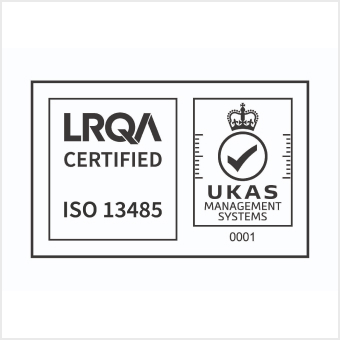In Vitro Testing for Cytotoxicity of Medical Devices
Chapter 1: Introduction to Cytotoxicity Testing in Medical Devices
- 1.1 Overview of Medical Devices
- Definition and classification of medical devices (Class I, II, III)
- Importance of biocompatibility in medical devices
- 1.2 What is Cytotoxicity?
- Definition of cytotoxicity and its role in safety testing
- Types of cytotoxic responses (e.g., apoptosis, necrosis, inflammation)
- 1.3 Regulatory Requirements for Cytotoxicity Testing
- Overview of global regulatory frameworks (e.g., FDA, EU MDR, ISO 10993)
- Role of cytotoxicity testing in ensuring medical device safety
- 1.4 The Significance of In Vitro Testing
- Advantages of in vitro testing over in vivo testing
- Ethical considerations and alternatives to animal testing
- 1.5 Purpose of the Summary
- To explore in vitro cytotoxicity testing methods, their applications, and challenges
Chapter 2: The Biology of Cytotoxicity
- 2.1 Cellular Response to Toxicity
- Mechanisms of cytotoxicity at the cellular level
- Types of cellular damage: membrane disruption, DNA damage, oxidative stress
- 2.2 Types of Cytotoxicity
- Acute vs. chronic cytotoxicity
- Local vs. systemic effects
- 2.3 Factors Affecting Cytotoxicity
- Material properties: composition, surface area, degradation products
- Cell types: human vs. animal cell lines, primary cells, stem cells
- Testing conditions: temperature, medium, exposure time
- 2.4 Toxicological Pathways and Biomarkers
- Key markers of cytotoxicity: LDH release, MTT reduction, caspase activation
- Mechanisms of cell death: apoptosis, necrosis, autophagy
Chapter 3: Overview of In Vitro Testing for Cytotoxicity
- 3.1 Introduction to In Vitro Testing Methods
- Why in vitro testing is essential for cytotoxicity assessment
- Types of in vitro assays: biochemical assays, live/dead cell assays, microscopy
- 3.2 Cell Lines Used in Cytotoxicity Testing
- Commonly used cell lines (e.g., L929, Vero, HEK293)
- Advantages and limitations of using immortalized vs. primary cells
- 3.3 Standard In Vitro Testing Protocols
- ISO 10993-5: Cytotoxicity testing in vitro
- Common testing scenarios and assay durations
- 3.4 Approaches to Assessing Cytotoxicity
- Endpoint assays: cytotoxicity, cell viability, proliferation, apoptosis
- Real-time cytotoxicity measurements
Chapter 4: In Vitro Cytotoxicity Assays
- 4.1 MTT Assay
- Principle of MTT assay: cellular metabolic activity
- Protocols and applications
- Advantages and limitations
- 4.2 LDH (Lactate Dehydrogenase) Assay
- Principle of LDH release as a marker for cytotoxicity
- Test protocols and application
- 4.3 Neutral Red Uptake Assay
- Mechanism and procedure of Neutral Red assay
- Comparisons with other viability assays
- 4.4 Alamar Blue Assay
- Principle and protocol for measuring metabolic activity
- Comparison with MTT and LDH assays
- 4.5 Trypan Blue Exclusion Test
- Overview of Trypan Blue as a viability marker
- Protocols for cell counting and viability analysis
- 4.6 Flow Cytometry for Cytotoxicity
- Using flow cytometry to assess cell death and viability
- Application of fluorescent probes in cytotoxicity assessment
- 4.7 Other Assays and Methods
- Caspase activation, apoptosis assays
- Gene expression analysis and protein profiling
Chapter 5: Testing Protocols and Methodology for Cytotoxicity
- 5.1 Preparing Medical Devices for Testing
- Device material preparation: sterilization, extraction, and leaching of materials
- Device contact and exposure protocols (direct contact vs. extract-based testing)
- 5.2 Culture Conditions for Cytotoxicity Testing
- Media composition, cell density, incubation conditions
- Optimizing exposure times for accurate results
- 5.3 Validation of In Vitro Assays
- Validation protocols for new and existing assays
- Calibration, reproducibility, and control measures
- 5.4 Control Groups and Negative Controls
- Importance of controls in in vitro testing
- Use of positive and negative controls in experimental design
- 5.5 Interpreting Results
- How to analyze cytotoxicity data
- Statistical methods used for result interpretation
- 5.6 Documenting and Reporting Results
- Regulatory expectations for reporting in vitro cytotoxicity data
- Best practices for maintaining data integrity and traceability
Chapter 6: Regulatory Guidelines and Standards
- 6.1 ISO 10993-5: Biological Evaluation of Medical Devices—Cytotoxicity
- Overview of the standard
- Key requirements and testing procedures for cytotoxicity
- 6.2 FDA Guidance on Cytotoxicity Testing
- U.S. FDA regulatory expectations
- Guidelines for testing cytotoxicity in medical device approval
- 6.3 EU and International Regulations
- CE marking and European Medicines Agency (EMA) requirements
- Global harmonization efforts in cytotoxicity testing
- 6.4 Standards for Specific Device Types
- Cytotoxicity testing for implants, devices with skin contact, and long-term devices
- 6.5 Ethical Considerations in Cytotoxicity Testing
- Animal testing alternatives and the 3Rs principle (Replacement, Reduction, Refinement)
- Ethical guidelines for conducting in vitro cytotoxicity tests
Chapter 7: Advances in In Vitro Cytotoxicity Testing
- 7.1 3D Cell Culture Models
- Use of spheroids, organoids, and bioprinted tissues in cytotoxicity testing
- Advantages of 3D models over traditional 2D cultures
- 7.2 Humanized In Vitro Models
- Stem cell-derived models for more accurate predictions
- Use of human-derived cell lines vs. animal cells
- 7.3 Microfluidic Systems in Cytotoxicity Testing
- Lab-on-a-chip and its applications in cytotoxicity testing
- Integration with high-throughput screening
- 7.4 High-Throughput Screening (HTS)
- Automation and scalability in cytotoxicity testing
- Benefits and challenges of HTS for medical devices
- 7.5 Emerging Technologies: CRISPR and Gene Editing
- Use of CRISPR-Cas9 for studying cytotoxic effects on a genetic level
- Advances in toxicity testing through gene editing
Chapter 8: Case Studies of In Vitro Cytotoxicity Testing
- 8.1 Case Study 1: Cytotoxicity Testing of Implantable Devices
- Example of testing materials for long-term implants
- Device types: pacemakers, orthopedic implants
- 8.2 Case Study 2: Cytotoxicity of Wound Care Devices
- Testing materials used in dressings, bandages, and surgical meshes
- Biocompatibility and cytotoxicity considerations for skin-contact devices
- 8.3 Case Study 3: Cytotoxicity Testing for Drug Delivery Systems
- Focus on nanomedicine and drug-loaded devices
- In vitro testing of drug-eluting stents, pumps, and patches
- 8.4 Case Study 4: Cytotoxicity in Cardiovascular Devices
- Evaluation of cytotoxicity in heart valves, catheters, and vascular grafts
- 8.5 Case Study 5: Cytotoxicity Testing of Diagnostic Devices
- Testing materials in diagnostic kits, sensors, and imaging devices
Chapter 9: Challenges in Cytotoxicity Testing of Medical Devices
- 9.1 Variability in In Vitro Assays
- Challenges with assay reproducibility and inter-laboratory variability
- 9.2 Limitations of In Vitro Testing Models
- The gap between in vitro and in vivo results
- Lack of complexity in traditional models
- 9.3 Regulatory and Standardization Challenges
- Evolving regulatory standards and their impact on testing protocols
- 9.4 Biological Variability in Testing
- Variations due to different cell lines, media conditions, and test protocols
- 9.5 Cost and Resource Limitations
- Budget constraints and resource allocation in large-scale testing
- 9.6 Addressing Ethical and Legal Issues
- Navigating the ethical considerations of animal testing and in vitro alternatives
Chapter 10: Future Directions in Cytotoxicity Testing
- 10.1 Personalized Medicine and Cytotoxicity
- Impact of personalized in vitro models using patient-derived cells
- 10.2 Development of New Testing Standards
- The need for updated ISO and FDA guidelines for new technologies
- 10.3 Integration of In Vitro and In Vivo Models
- Advancements in hybrid testing strategies (e.g., ex vivo, 3D models)
- 10.4 Impact of Artificial Intelligence and Machine Learning
- Use of AI in predicting cytotoxicity and automating assay interpretation
- 10.5 Moving Towards Predictive Toxicology
- The future of toxicity testing and alternative methods for safer medical devices
Chapter 11: Conclusion
- 11.1 Summary of Key Findings
- 11.2 The Role of In Vitro Testing in Medical Device Safety
- 11.3 The Future of Cytotoxicity Testing and Challenges Ahead
- 11.4 Final Thoughts on Regulatory, Technological, and Ethical Considerations



